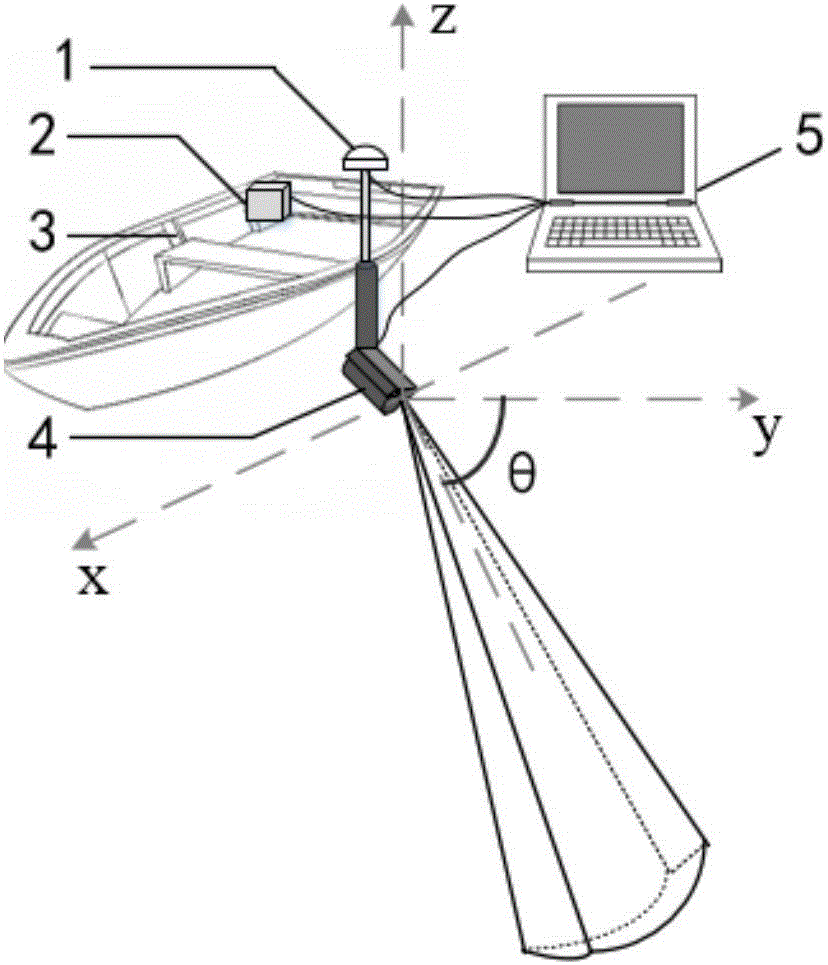Fish stock quantity estimating method based on probability hypothesis density particle filtering algorithm
A particle filter algorithm, probability assumption density technology, applied in the direction of sound wave re-radiation, radio wave measurement system, measurement device, etc., can solve the problems of large error, damage to fish resources, etc., and achieve a simple and high-precision method Effect
- Summary
- Abstract
- Description
- Claims
- Application Information
AI Technical Summary
Problems solved by technology
Method used
Image
Examples
Embodiment Construction
[0049] The present invention will be described in further detail below in conjunction with specific embodiments and accompanying drawings, but the present invention is not limited thereto.
[0050]The dual-frequency identification sonar used in this example is mainly a multi-beam system composed of 3 lenses and a sonar array. It can transmit ultrasonic waves with a frequency of 1.8MHz or 1.1MHz underwater. The minimum beam detection range is 5 meters. The maximum is 40 meters, the rate of receiving data is up to 20 frames of images per second, the detection field of view is 29° in the horizontal direction, and 14° in the vertical direction, the weight in the air is about 7 kg, and the power is about 30W. figure 1 It is a flow chart of the realization of fish population estimation using dual-frequency identification sonar. The main process is described as follows:
[0051] The first step is to fix the dual-frequency identification sonar on the survey ship. Such as figure 2 A...
PUM
 Login to View More
Login to View More Abstract
Description
Claims
Application Information
 Login to View More
Login to View More - R&D
- Intellectual Property
- Life Sciences
- Materials
- Tech Scout
- Unparalleled Data Quality
- Higher Quality Content
- 60% Fewer Hallucinations
Browse by: Latest US Patents, China's latest patents, Technical Efficacy Thesaurus, Application Domain, Technology Topic, Popular Technical Reports.
© 2025 PatSnap. All rights reserved.Legal|Privacy policy|Modern Slavery Act Transparency Statement|Sitemap|About US| Contact US: help@patsnap.com



